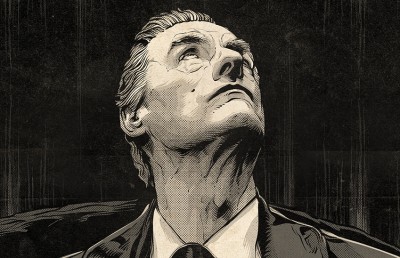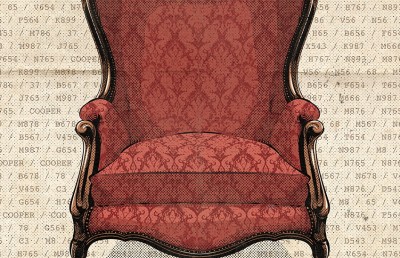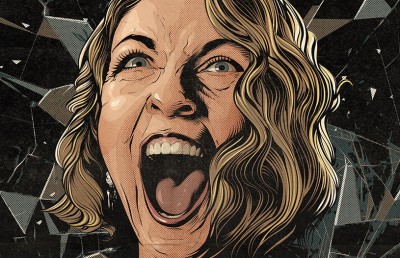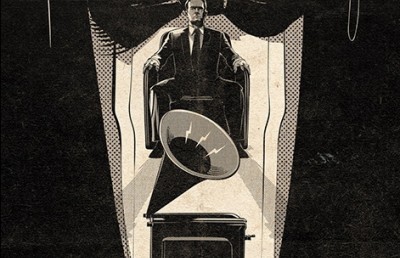Twin Peaks: The Return, Part 8: The Western, Science-Fiction and The BIG BOmB
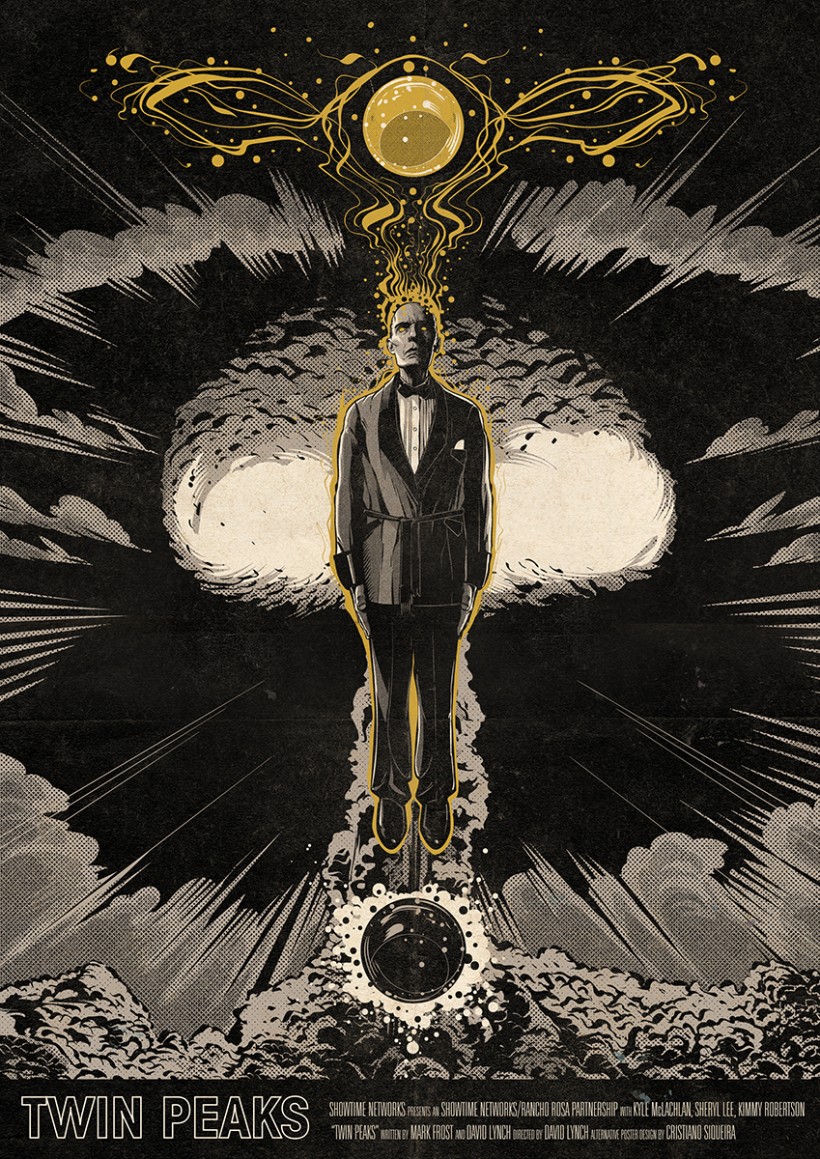
Image courtesy of Cristiano Siqueira
This is the water, and
This is the well
Drink full and descend
The horse is the white of the eyes
And dark within
With these words Twin Peaks: The Return entered the annals of TV history as one of its most outre, experimental and avant-garde moments. These words almost shamanistically characterize the show as a whole: absurd, strange, scary, funny and poetic. The words were spoken by an ash-faced Woodsman who looks like he crawled out of a mine. That the actor Robert Broski is actually an Abraham Lincoln (see “Interview with Broski”) look-a-like who has made a mini-career from impersonating the famous President makes the part’s links to real history (dates, historical events, a sense of time and place) that much more poignant. After-all, what can be more contradictory than dressing an historical figure who played a significant role in the abolishment of slavery in black-face! The character makes his appearance stumbling out of the darkness of a desolate country road at night to startle a couple in their car with the completely inappropriate line, “Gotta light?” (Well, at least he does have a cigarette dangling from his fingers!) Gotta light? Is this Lynch’s reflective joke at how darkly lit the scene is? Or at the electrical lights flashing intermittently from an off-screen source? Before this moment immortalized the line, hearing the words “Gotta light” reminded me of those Marlboro cigarettes ads from the 1960s and 1970s and the stereotypical opening pick-up line uttered by men the world over in bars, cafes and nightclubs. “Hey good looking, got a light?” Closer to home, the terseness of the line recalls Dougie Jones’ monosyllabic speech pattern (“Some change.” “Game.” “Call for help.” “Badge.” “Where home.” “Far from.”). The image of the isolated road is a favorite of Lynch’s –think Lost Highway, Straight Story, Wild at Heart, Mulholland Drive– while also referencing many classic film noir and science fiction films from the 1940s and 1950s. These are just a few of the iconic moments that have cemented this part’s place in the center of the outer edges of popular culture.
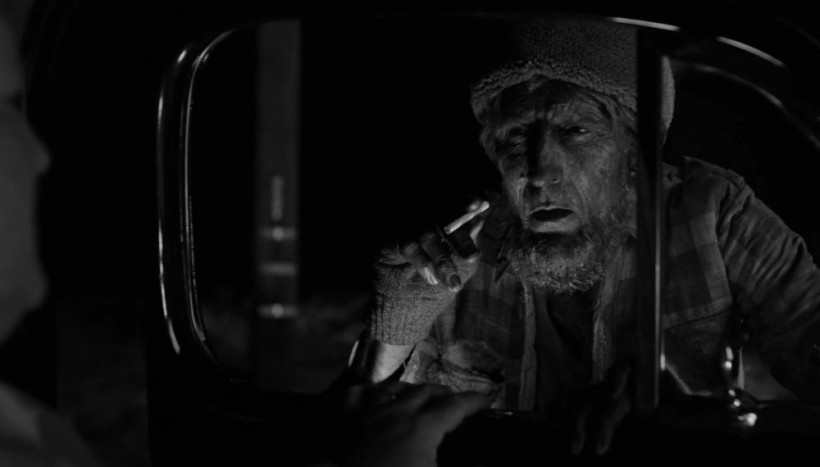
Gotta Light?
But there is a lot more going on in this part which has more grounding in things we have a chance at elucidating. One such context that struck me about Part 8, after collecting my jaw from the floor, was the way it echoed in an indirect way, the ethos of the 1950s American science-fiction film; writers on the series have noted this connection to the 1950s science-fiction film. Matt Zoller Seitz writes of Part 8 that it is, “… nodding to a rich tradition of post–World War II science-fiction cinema in which monsters birthed by atom bomb tests (and other scientific or military experiments that were essentially stand-ins for atom bomb tests) menaced teenagers and their adult guardians in Norman Rockwellian small towns and suburbs” (Vulture, June 26, 2017). And in this same Offscreen issue, Joel Bocko in his essay “Secret Histories Return to Twin Peaks” refers to Part 8 as “a 1956 B-horror movie scenario.” Part 8 feels like a 1950s science-fiction film from a parallel universe. Since at least 1986 Lynch has had a long-standing aesthetic and some would say political relationship with the idea of the 1950s. Starting with Blue Velvet, and working through Wild at Heart, Twin Peaks, Lost Highway, Mulholland Dr., and Inland Empire, Lynch has regularly borrowed from a real and imagined iconography of 1950s Americana: music, sock hops, cardigans, diners, cars, leather jackets, pastel colors, Elvis Presley. Referencing from the past but not set in the past. With Part 8 Lynch, as Joel Bocko notes, returns to the period film after a 27-year gap (The Elephant Man). However, even factoring in the experimental nature of the Part 8, there is one particular way in which the Part 8 has a more direct lineage to the 1950s (and specifically, science-fiction) than his other films; namely, the use of the Nuclear bomb and by extension, the paranoia of the Cold War –which coincidently ended (1947-1991) at the same time as the second season of Twin Peaks, 1991.
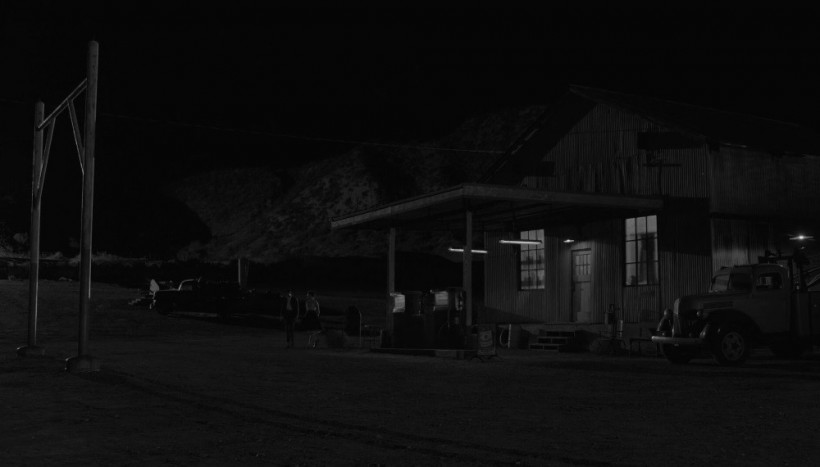
Classic isolated western town
Two images stand out in this respect: the mushroom cloud and the small town surrounded by a rural, desert landscape. Most likely by design, Part 8 was the only installment of Season 3 filmed (largely) in black and white, emulating many important science-fiction films of the 1950s: The Thing (Christian Nyby, 1951), The Day the Earth Stood Still (Robert Wise, 1951), Them (Gordon Douglas, 1954), Godzilla, King of the Monsters (Ishiro Honda, 1954), Tarantula (Jack Arnold, 1954), The Incredible Shrinking Man (Jack Arnold, 1957), It Came From Outer Space (Jack Arnold, 1953), The Beast from 20,000 Fathoms (Eugenie Lourie, 1953), Creature from the Black Lagoon (Jack Arnold, 1954), The Day the World Ended (Roger Corman, 1955), Killers From Space (W. Lee Wilder, 1954), Invasion of the Body Snatchers (Don Siegel, 1956), The Creature Walks Among Us (John Sherwood, 1956), The Deadly Mantis (Nathan H. Juran, 1957), The Amazing Colossal Man (Bert I. Gordon, 1957), It! Terror From Beyond (Edward L. Cahn, 1958), I Married a Monster From Outer Space (Gene Fowler Jr., 1958) and Attack of the 50 Foot Woman (Nathan H. Juran, 1958).
In the majority of these 1950s films, nuclear contamination is the source of the threat to humanity. And for those where nuclear radiation is not a factor, it is aliens attacking from outer space who provide the threat to humanity (although in some cases, nuclear technology remains part of the plot). Whereas in other cases, nuclear bombs are the direct cause of the monster. The greatest example of this is produced by the Nation who were the bomb’s first victim, Japan, Gojira, (Godzilla, Ishiro Honda, 1954), which in its use of the atomic bomb was influenced by Lourie’s The Beast from 20,000 Fathoms. The two greatest threat tropes of the 1950s SF film –nuclear war/bomb and aliens who attack and/or possess human bodies– are factored into Part 8 of Twin Peaks: The Return. Even the classic Cold War fear of Communist take-over plot device, where humans have their bodies taken over by aliens and stripped of their emotions, is used throughout Twin Peaks: The Return. In an indirect way Dougie Jones’ somnambulist acting suggests a body stripped of emotion, a shell of his former overweight, gambling obsessed self (other critics have likened Jones’ behaviour to late life cognitive deficiency illnesses like dementia or Alzheimer, which works if you overlook the fact that Dougie is nowhere near the age where that illness strikes). The image of the Woodsmen “floating” down from the sky and “landing” on the arid desert tundra, then moving ominously toward the small Western-style town, evokes the mutant insects or terrestrial aliens from outer space from 1950s science-fiction film coming to conquer “new” land.
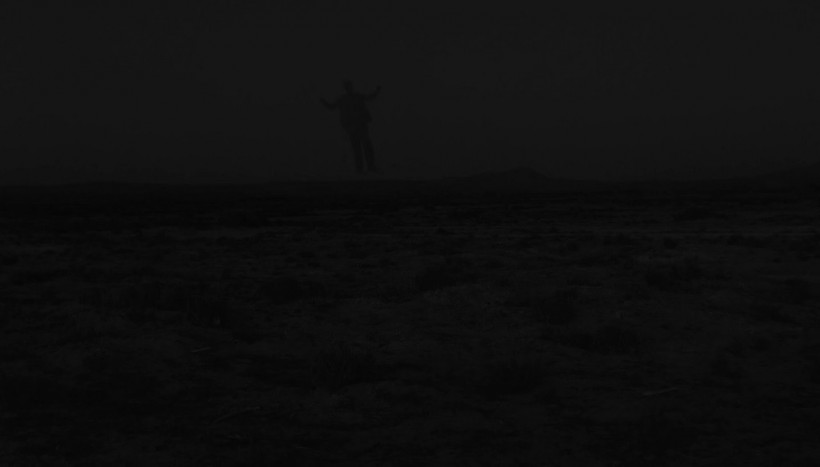
Floating alien lands in desert
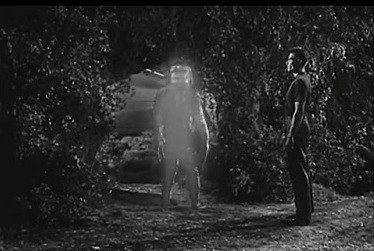
Alien Takeover in the desolate landscape in I Married a Monster From Outer Space
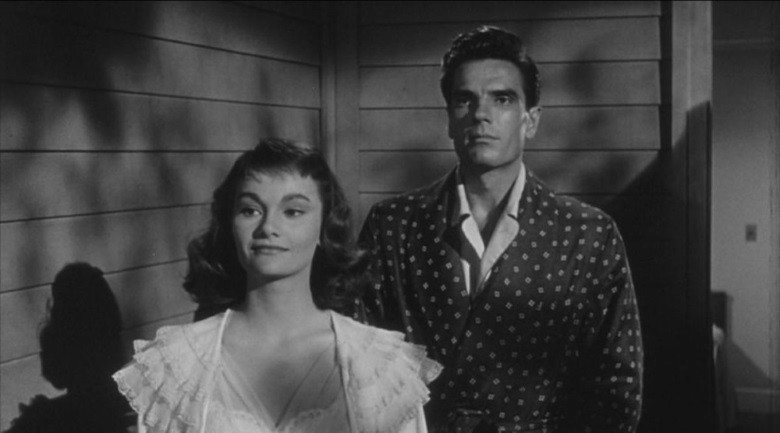
Unemotional ‘alien’ husband in I Married a Monster From Outer Space

Unemotional ‘alien’ husband in Twin Peaks: The Return
One of the most visually expressive moments of the classic 1950s science-fiction film is the use of the desolate rural or desert landscape (or in the case of The Thing, desolate snow and ice covered North Pole) as the location for the alien sighting or appearance. Something about the aridness, the wind, the silence, the sense of stillness and the emptiness of this location (even if sometimes shot in studio) provided the right atmosphere for an alien invasion. Just think of the eerie opening to Them!, where two police officers come across a little girl in a comatose state caused, we soon learn, from seeing her family murdered by huge, nuclear mutated ants. This desolate, rural space is also evocative of a pre-technological/modern age which is often used to tap into deep psychological and existential fears that were rampant at the time, and is something which Lynch also draws from in Part 8. Not only is the desert/desolate landscape atmospheric but it taps into the genre which ruled American cinema prior to the rise of the science-fiction film, the Western, and makes similar use of the space’s geo-political meanings: namely the theme of imperialism, of conquering “unclaimed” land. The Western genre was predicated on the historical rationale of Manifest Destiny, the wildly held 19th century belief that gave America an ordained right to conquer the “uncivilized” Native people who were indigenous to the land and “tame” the “wild west”. In an ironic turn the same spaces once “colonized” by the Americans in the Western, become in the 1950s science-fiction film the place where America’s “Red Scare” fears of being colonized by Communists —usually in the guise of aliens— gets played out.
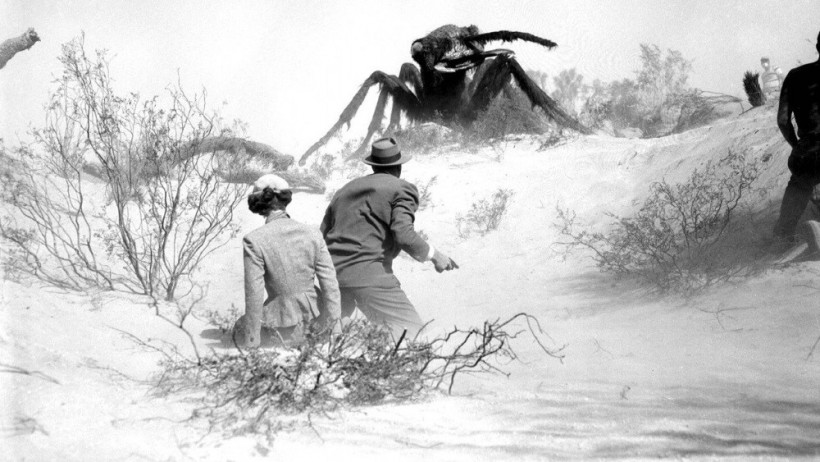
Mutant ants attack in the desert in Them!
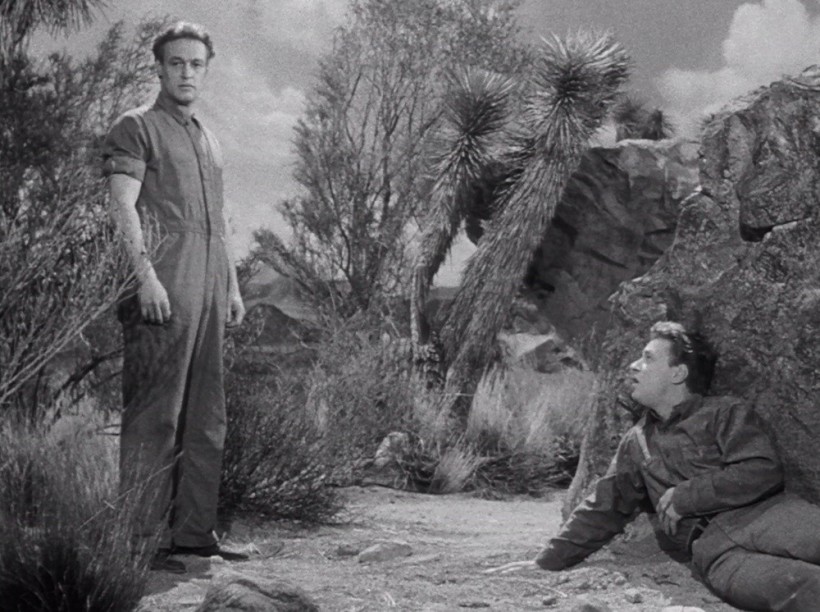
Alien takeover in It Came From Outer Space
Writer Michael Carroll in “Agent Cooper’s Errand in the Wilderness: Twin Peaks and American Mythology” articulates this shift from the Western frontier to the outer space frontier in Seasons 1 and 2 of Twin Peaks: “Appropriately ancient Indian petroglyphs contain the keys to the Black Lodge and its secrets. Even more appropriately, Windham Earle is counterpoised by Major Briggs, who, as part of “Project Bluebook,” has turned his attention from the random chatterings of deep space to the secrets of the wilderness. In this way, Briggs indicates an essential historical link between the Kennedy Administration/NAS mythology of the “last frontier” and the early American frontier mythology from which, after all, the notion of outer space as a frontier is derived” (p. 292).
This geo-political (colonialism, imperialism, genocide) significance of the science-fiction and Western gets played out in Twin Peaks. For example, the Native named Ghostwood forest, where many of the show’s mysterious events occur, is in line to be commercialized through Benjamin Horse’s Ghostwood Development Project, until Horne has a change of heart and starts a campaign to conserve the forest. In his essay “Tensions in the World of Moon: Twin Peaks, Indigeneity and Territoriality,” Geoff Bil cites Annie Blackburn’s Miss Twin Peaks pageant speech in the series’ penultimate episode which quotes the words of the 19th-century Duwamish chief Seeathl about the Indian’s strong ties to their land. Bil continues, “Indeed, the visual prominence of Aboriginal symbolism throughout Twin Peaks, from the Plains Indian iconography exhibited in Johnny Horne’s headdress and the statue beside Cooper’s bed, to the series’ near ubiquitous use of Pacific Northwest murals and totem poles, invests Annie’s reference to indigenous ghosts with particular import.”
The most direct tie to Indigenous culture is of course, one of the show’s most down to earth and wisest characters, the Native American Deputy Hawk, who Cooper and company usually turn to when things get beyond their cultural purview (though Hawk is just as likely to remain tight-lipped as to venture an answer). Although Hawk is one of the more likeable characters in the show, he does not necessarily score Lynch/Frost points for cultural authenticity. Quoting Bil again, “In many ways … both Hawk and Tonto [who actor Horse played in the 1981 film The Legend of the Lone Ranger] are archetypal of what has been called the “White Man’s Indian”: they are representations, in other words, that bear far greater resemblance to settler colonial cultural priorities than they do to bona fide Native Americans, past or present.” On the other hand, Hawk has a certain “I don’t suffer fools gladly” philosophy and a sardonic attitude toward people around him (“Some of my best friends are white.”) that has the effect of producing “destabilising, pokes at colloquial bigotry” and has led actor Michael Horse to say that his character is “[one] of the best Native American roles to ever be on television” (“Michael Horse Movies & TV,” Gathering Tribes website).
Aspects of the BOB character can also be linked to Native American culture, although in the end his National origin is open to interpretation. Bil underscores this textual equivalency when he notes that while Mike calls BOB a “fire spirit”, Albert says, “perhaps BOB is just the evil men do.” But Mark Frost admits some lineage to Native American culture in a quote from Twin Peaks online: “the idea for BOB originated in American Indian mythology and that he was a local evil spirit whose presence in the Twin Peaks area dates back to ancient times.” Bil also quotes from Michael Carroll’s essay, who, by way of comparison with indigenous figures in 19th-century American fiction, lists numerous ways in which BOB fits the “evil Indian archetype”, namely that he wears a “grimace” and “long oily hair”, uses “threatening postures”, and “dwells in the forest, beyond the perimeter of the village in, appropriately enough, Ghostwood Forest” – to which we might add BOB’s propensity for raping and murdering young white women (p. 291).
If allowing some credence to the notion of BOB as bearing Native American origins, his function politically, if matched with Deputy Hawks’ function, acts as a scapegoat for white man’s violence. According to Bil, “In this case, not only does Hawk provide a friendship and alliance vis à vis “evil Indian” BOB that helps disavow the settler wrongdoings which underpin the violence in Twin Peaks in the first place; he also lends credence to colonialist projects of displacement and assimilation through his representation as culturally anterior to (Major Briggs’) scientific knowledge and superfluous to (Cooper’s) transcendental intuition and expertise. If BOB helps absolve white guilt by deflecting colonialism’s physical and territorial criminality against first peoples onto Native Americans themselves, Hawk mollifies settler scruples with respect to forced acculturation through the portrayal of indigenous ways of knowing as preliminary —albeit complementary— to more highly developed western systems of thought.”
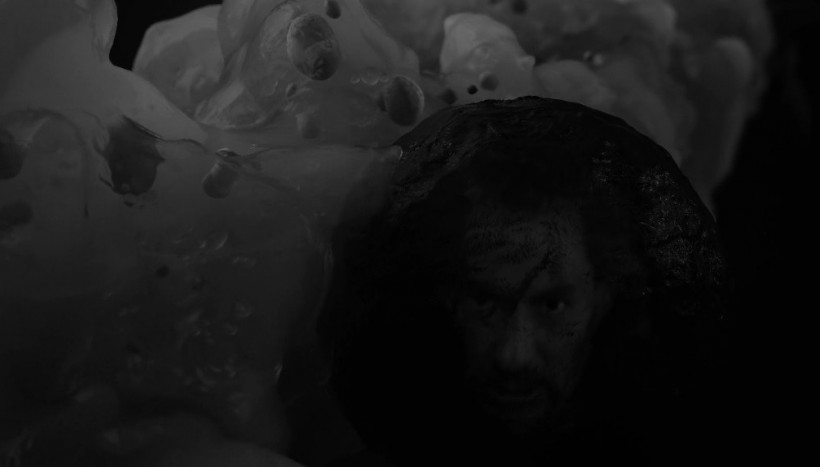
BOB in space
Regardless of how much credence is given to BOB’s “Native American” lineage, BOB’s ability to “possess” people to perform acts beyond their moral compass echoes the aliens from the 1950s science-fiction films, who use the human body as a vessel to achieve their goal of planetary conquest (or in the case of It Came From Outer Space assume their human form long enough to repair their ship and return home). Coupled with BOB’s customary blue denim jean jacket, suggestive of the “wild west”, the figure of BOB blends Western and science-fiction imagery, much like the show itself. Returning to Part 8, the function of the Woodsman is interesting, as it combines the white man settler, dressed in period costume, with BOB’s “Native Evil” (or “Evil Alien”) ability to possess through mind control and taking control over human bodies. Perhaps the black face he sports is a symbolic reference to his liminal state between “white settler” and “Native American BOB”?
Lynch (and Frost) borrow from all of these ideas and imagery, but they go one step further into realism and Cold War ideology, by representing the singular defining image for the Cold War: the nuclear bomb. Surprisingly, I could only come up with one 1950s science fiction film that depicts a nuclear bomb exploding, and that is Lourie’s The Beast from 20,000 Fathoms, which makes its already elevated status as a classic SF film even higher. 1 Even if I extend the search to other countries, granting that this represents a smaller potential corpus of films seen than American films, I cannot come up with another science-fiction film that uses images of a nuclear bomb exploding. Another film I can point to is Kubrick’s Dr. Strangelove from 1964, followed by a slew of them in the 1980s, influenced by the popular found footage counter-culture hit Atomic Café (1982, Jayne Loader, Kevin Rafferty and Pierce Rafferty); titles that include the highest rated Made for TV movie up to that time, The Day After (1983, Nicholas Meyer), and its UK equivalent, Threads (1984, Mick Jackson). The reason for the relative scarcity of actual atomic bomb footage in science-fiction films strongly shaped by the nuclear age may be because the image of the bomb was too strongly tied to real politics and was already exhausted in countless scientific, military, newsreels, documentary, and docudramas of the time (like the MGM produced docudrama from 1947, The Beginning or the End?) . Another probable reason is that the owners of nuclear bomb footage may have been inclined to charge a higher licensing fee for Hollywood fiction films.
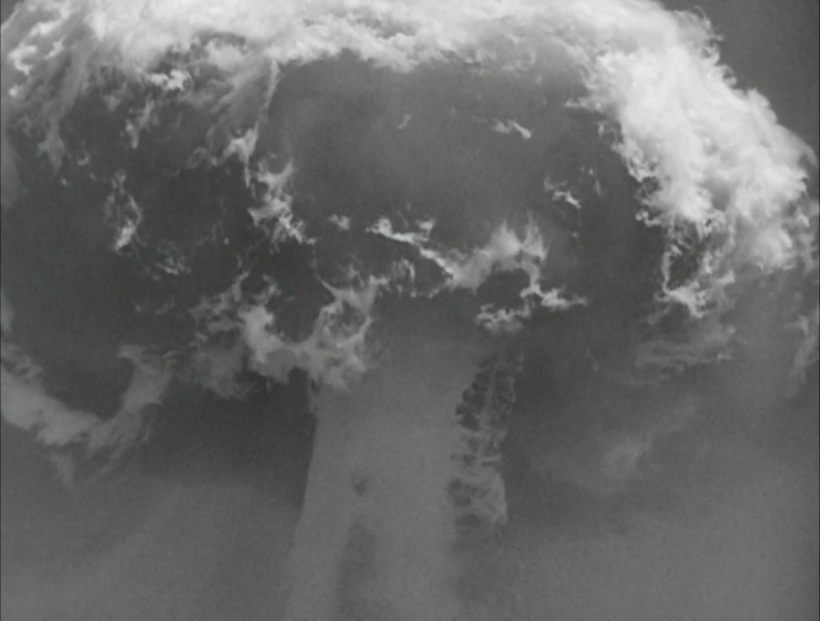
Rare instance of an atomic bomb explosion, in The Beast From 20,000 Fathoms
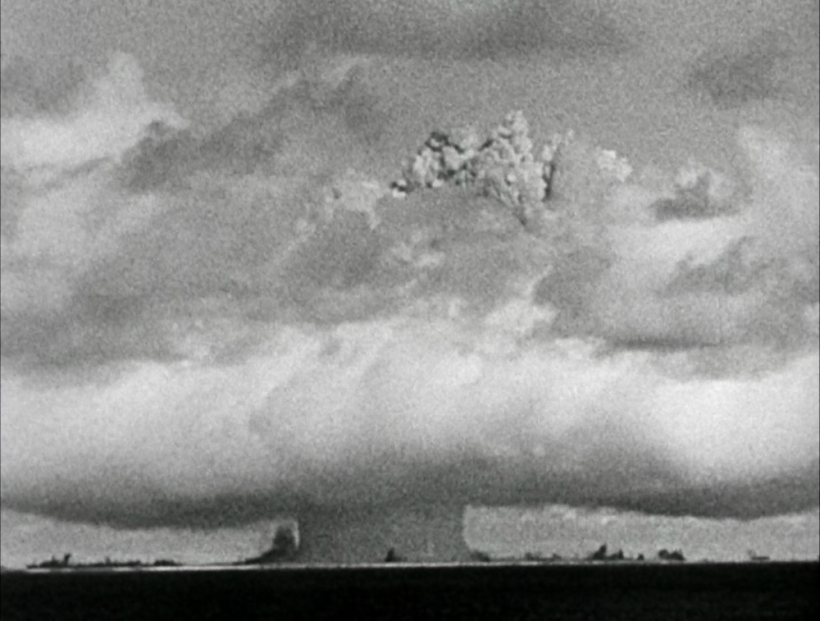
The Beast From 20,000 Fathoms
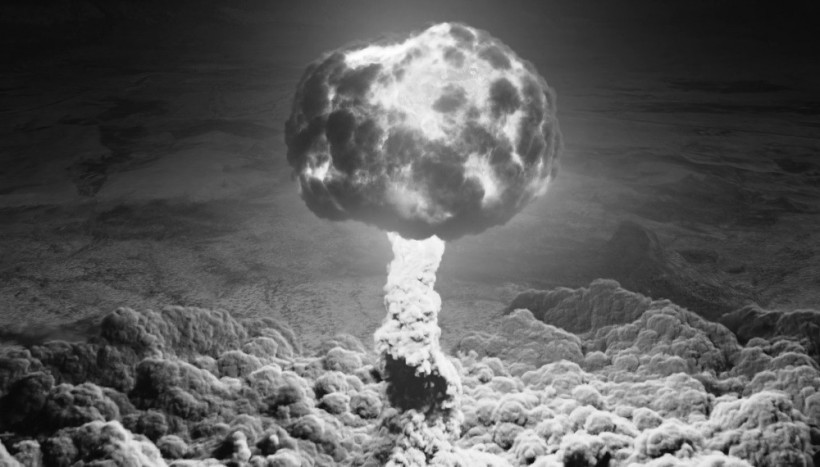
Lynch’s Bomb
Many who have written on Part 8 have noted how the bomb is both a literal and figurative birthing of the ultimate evil, how the floating image of BOB sprouts from the bomb (and also its antithesis Laura Palmer). Bocko in this issue states that the show “magnifies this dualistic opposition between man’s inherent goodness and evil to cosmic proportions, staging it as a fundamental struggle between light and dark on a mythic scale.” Seitz refers to the “hideous evil unearthed by the bomb”. Sara Swain in her essay from this special issue astutely likens Carrie Page’s (Sheryl Lee) scream in the dying moments of Part 18 as “the visual equivalent of an atomic bomb”. Perhaps one can extend back to Edvard Munch’s iconic scream from “The Scream” as a similar prescient visage of the atomic age (surely Van Gogh’s swirling fire red coloring foreshadows the orange-reddish of many color photos of atomic bomb explosions).
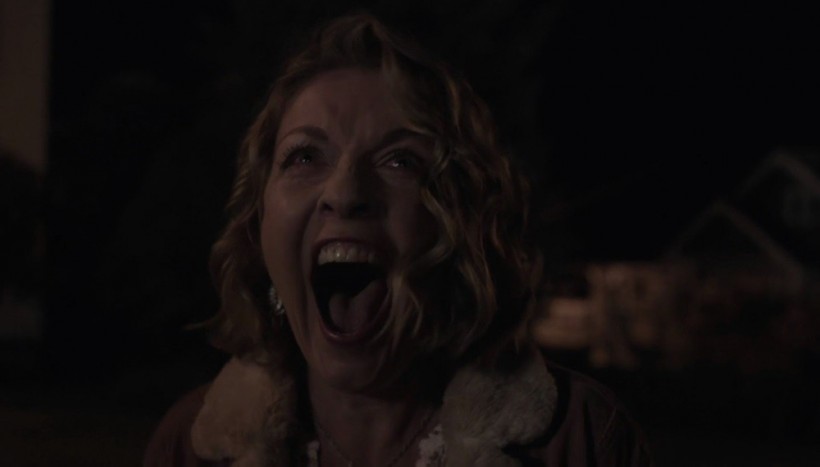
Atomic Scream
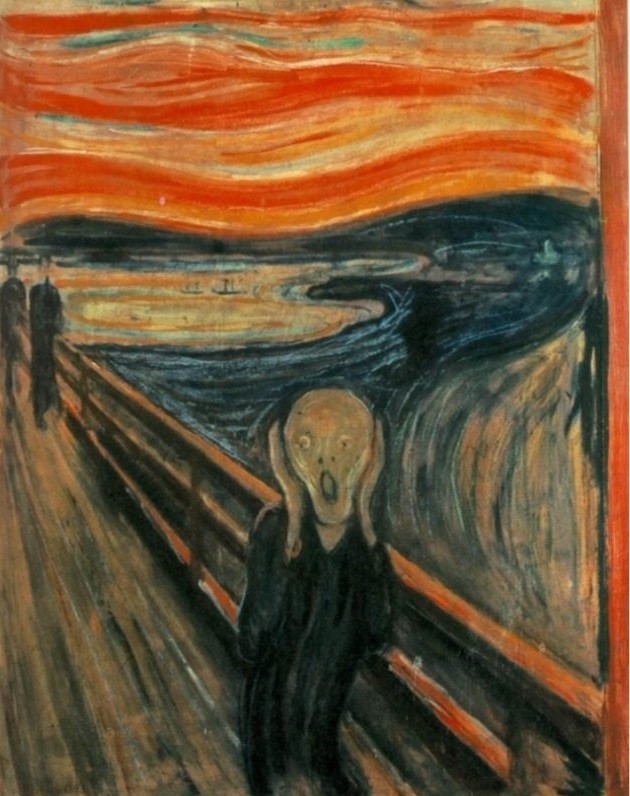
THE Scream
Where Lynch’s representation of the bomb does align with historical representation is in the aestheticization of the bomb. Author Deborah Lovatt quotes Leo Marx from his book The Machine in the Garden: Technology and the Pastoral Ideal in America about how the bomb was the ultimate expression of the potency of military technology to express National Identity, taking the nation’s conquering of natural landscape, the American Sublime, to the Technological Sublime. Where the Western genre epitomized the untamed West as the “garden” land to be conquered, during the 1950s Cold War, space became the new frontier to explore and conquer (to quote Captain T. Kirk, “space, a final frontier”). But the destructive force of the atomic bomb also brought a fear and awe which had to be conquered, partly through propaganda fed to its citizenry and military through government documentaries, government sponsored docudramas, newsreels, and educational pamphlets. One of the ways of coping with the destructive nature of the bomb was to aestheticize it. America in the mid-20th century began to fetishize the bomb as a form of visual pleasure, often likening the bomb to “familiar and ….natural phenomena: umbrellas, flowers, mushrooms and…the sun” (Lovatt, 136). “Peter B. Hales argues that this aestheticization of the Bomb was a fundamental means of bringing it within the reaches of cultural meaning….Importantly, this new nuclear aesthetic both necessitated and induced the repression of the Bomb’s destructive capacities” (Lovatt, 136).
Even the location site for hundreds of nuclear tests conducted in the 1940s and 1950s, the Pacific Ocean Islands, the Marshall Islands in Bikini Atoll, were chosen for their natural beauty and because they were seen by Americans at that time as a paradise. Lovatt quotes Hale again: “Hale suggests that it was precisely Bikini Island’s beauty that aroused military interest in it….Perhaps, he argues, the military hoped that placing the bomb ‘within a landscape of absolute innocence’ might work to ‘scrub it of its evil’. (137). This “attraction” to evil, or seeing the beautiful in the morally ugly, is a pet them of Lynch’s that he has developed steadily across his painting and films, culminating in the rapturous aesthetics in Part 8. However, Lynch’s aesthetic recreation of the famous first Trinity atomic bomb is cast in factual reality with the historically accurate title card: “July 16, 1945, White Sands, New Mexico, 5:29 am (MWT).” The date identifies it historically as the Trinity bomb which was set off in the Jornada del Muerto desert. However, his highly stylized recreation of the bomb, foregoes real found or archival footage for computer generated imagery. After the title card and off-screen countdown Lynch offers us a vast sea of cloud like formations surrounding the usual mushroom cloud hovering over a water mass or a desert. The mass around the bomb recalls the celestial oceans surrounding the planet Solaris in Tarkovsky’s Solaris. Then the (virtual) camera slowly zooms into the cloud in the middle of a Solaris-like ocean. Instead of a crash we hear frenetic high pitched, largely stringed orchestral sounds, Penderecki’s “Threnody for the Victims of Hiroshima”, stretching over floating white speckles that suggest nuclear ashes. As the virtual camera takes us into the “colored eye of the storm” (a scene which many have rightly called an homage to the Star Gate sequence in 2001: A Space Odyssey) Lynch introduces into the score snippets of “realistic” sounds of blasts and whooshes of fire. Lynch aestheticizes the bomb by adding color (and sound) to the “eye of the bomb,” even though the original Trinity footage “was filmed exclusively in black and white and without audio” (Alex Wellerstein). (There was, however, a single color photo taken of the Trinity test, by Jack Aeby, but no color film footage. See the Gallery in “Trinity Test Eyewitnesses”: https://www.atomicheritage.org/key-documents/trinity-test-
eyewitnesses.)
Lynch’s artistic license to add color and sound to his recreation of the bomb does seem to comply quite closely to the dozens of written eye-witness accounts of the Trinity test:
It was like being at the bottom of an ocean of light. We were bathed in it from all directions. The light withdrew into the bomb as if the bomb sucked it up. Then it turned purple and blue and went up and up and up. We were still talking in whispers when the cloud reached the level where it was struck by the rising sunlight so it cleared out the natural clouds. We saw a cloud that was dark and red at the bottom and daylight at the top. Then suddenly the sound reached us. It was very sharp and rumbled and all the mountains were rumbling with it. (Joan Hinton)
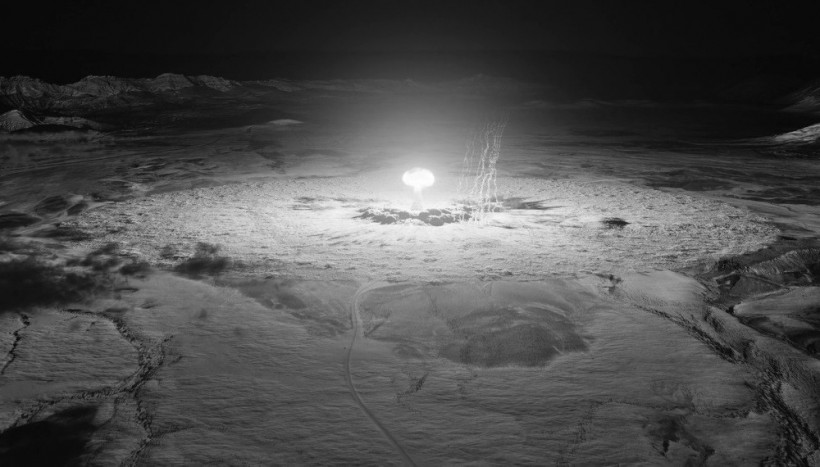
Lynch’s Bomb in Alien Landscape
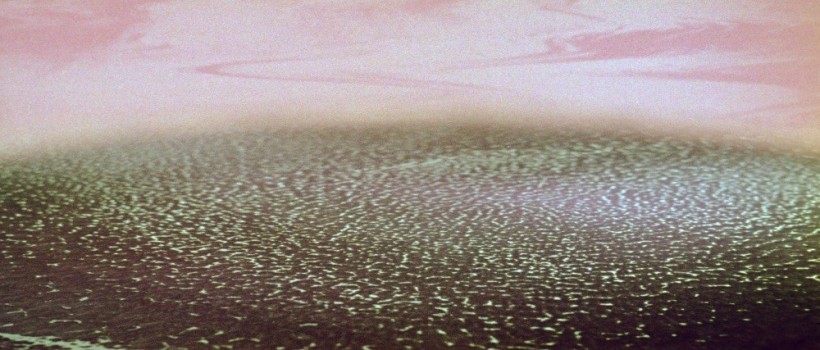
The sentient planet from Solaris
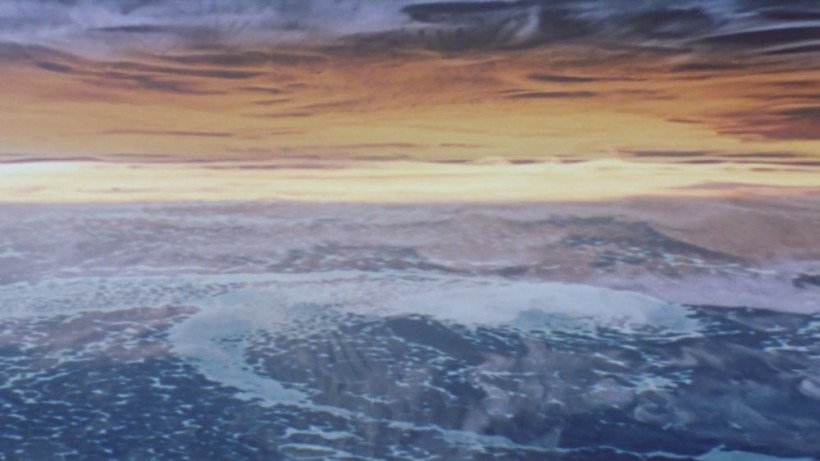
The “colors out of space” from Solaris
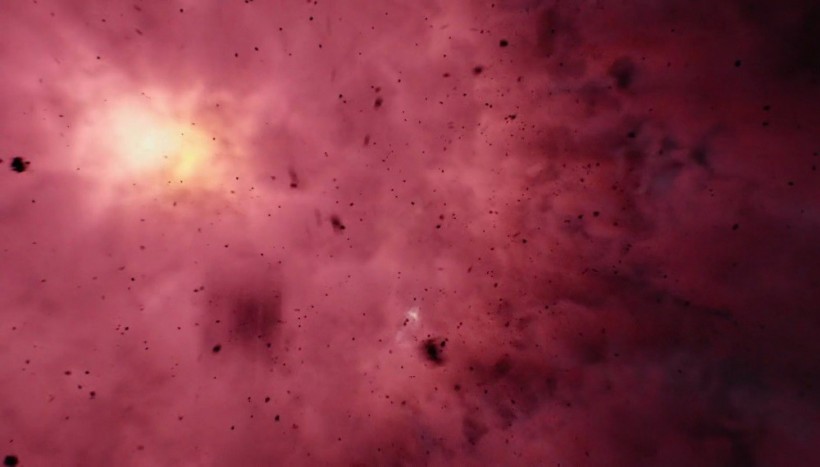
Twin Peaks: The Return. Color added
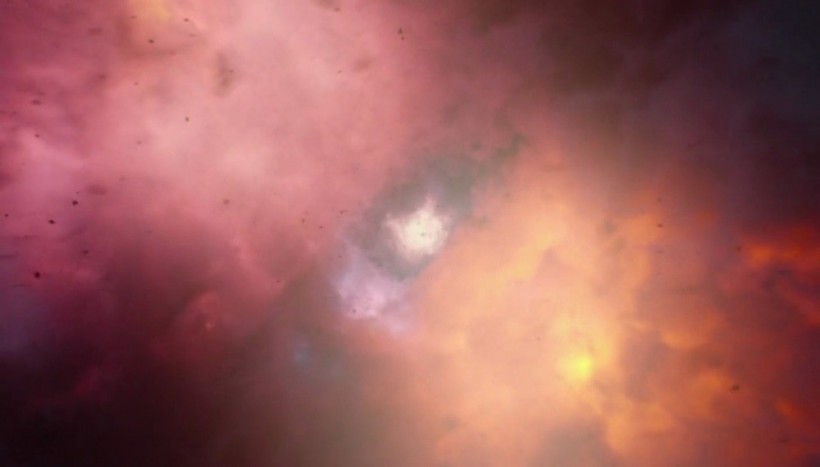
The colors of destruction from Twin Peaks: The Return
And then, after about five minutes of the bomb and its fallout, Lynch cuts from one of the most mind-boggling sequences in television history to a lonely gas station/convenience store at night, in the middle of nowhere. Just as we think we are back to normality, animated stacks of smoke, flashes of blinding white light and later woodsmen begin to dance in, out and in front of the gas station, as if the bomb has been transplanted into the shop.
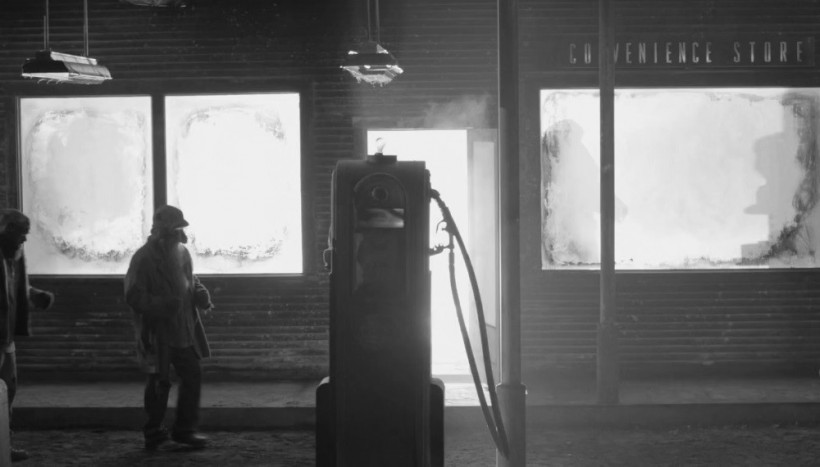
After the gas station, the scene cuts to an Eraserhead-like image of a female humanoid shape floating in a dark void, spitting out a milky white substance with egg-like orbs. Inside one the orbs floating toward the camera we see the image of BOB –a sort of twisted origin story, with the personification of Evil sprouting out of the bomb. The image of BOB leads us back into the eye of the bomb, with light and fire dazzling the viewer’s sense of vision. A beautiful gold orb floats seductively toward the camera, engulfing it and sending us on through to another level of the journey, a fast-moving flight through a black-red tunnel that leads to an ocean. The camera glides over the ocean toward an ominous vertical mountain in the middle of the ocean, which houses a round, chrome-colored building at its peak. As viewers we still experience this as an extension of the bomb, but we are no longer in the desert locations of the historical Trinity bomb, but a large body of water. Without stopping, the camera continues its upward movement closer and closer to the foreboding structure atop the hill, then finally entering into it via a small vertical opening, like one you would find on the side of a Gothic castle, taking us into the proverbial Lynchian “void”. Once out the “other side” we find ourselves in a somber, dank, Gothic like interior, with a forlorn woman named Seniorita Dido (Joy Nash) sitting at the edge of a bed and a huge bell like structure hanging in the left foreground, a phonograph to the back and a lamp to the right. Oddly, after the extended bomb sequence, everything in this set LOOKS like a bomb: the bell, the phonograph, the lamp, even the Giant (Carl Struycken) who enters the shot later.
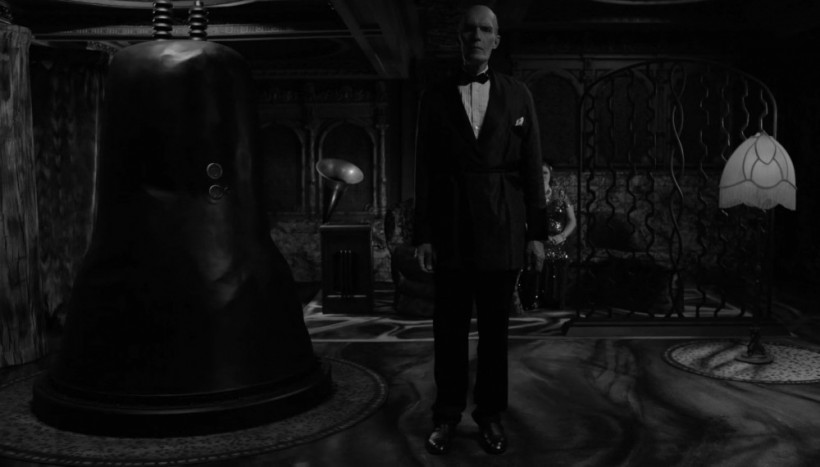
Why does everything look like a bomb?
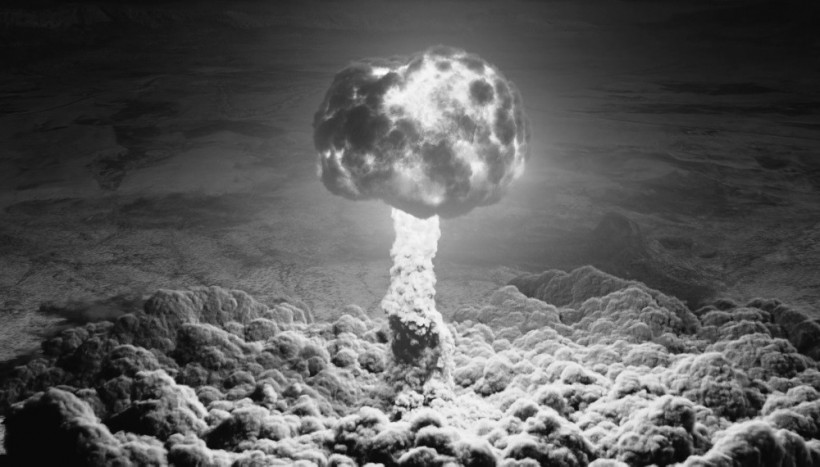
This moment signals the end of the bomb sequence —though as noted, its memory lingers in the mind for the rest of Part 8– and in fact it returns as a film-within-a-film when the Giant watches the same bomb events on a huge screen.
With the image of BOB frozen on the screen, the Giant begins to float in the air, and a golden orb materializes from his neck which descends to the waiting lady, who cups it in her hand. As the orb moves toward the camera we see the image of Laura trapped inside the orb, a “good” counterpoint to BOB’s evil. This “origin” story of Good (Laura) and Evil (BOB) fades to black at approximately 40 minutes, and gives way to a flashforward to 1956 (to be precise, August 5, New Mexico Desert), and the final 18 minutes of the show. The desert is engulfed in darkness. A series of edits brings us to an egg in the desert beginning to crack –another origin story, this time in the shape of a metaphorical winged frog-like insect which begins to crawl away from its shell (a form that recalls the baby from Eraserhead). This cuts to the most “narrative” moment in Part 8, an exchange between a young teenage couple as the boy escorts his date home through the dark town (a scene which recalls the similar walk taken by Kyle MacLachlan and Laura Dern through the suburban neighborhood in Blue Velvet). This exchange is cross-cut with the introduction of the noted “Woodsmen”, ambling into town from the desert, swarming and accosting a couple in their car in the famous “Gotta light” exchange. With a diegetic 1950s pop song playing, the editing cuts between the four imminent victims of the “alien invasion”: the radio host, a waitress, a mechanic, and the teenage girl. The Woodsman begins his assault with a fifth victim just introduced, the receptionist at the radio station, crushing her head with a single hand. Next to suffer his crushing force is the radio announcer. After killing the announcer, the Woodsman knocks the needle off the pop record playing on the phonograph and begins to broadcast his mind paralyzing mantra over the airwaves (“This is the water….”), which has the effect of rendering the townspeople unconscious or hypnotized, although the effect on the girl, I will argue, appears different. In fact, there are three different outcomes of the alien invasion. Two of the victims, the radio station receptionist and the radio DJ have their head gruesomely crushed. Upon hearing the Woodsman’s mantra, the waitress and mechanic crumble to the floor like a sack of potatoes (we don’t know if they are dead). The teenage girl is the only one who is attacked by the winged insect; and we assume, her body taken over by the aliens.
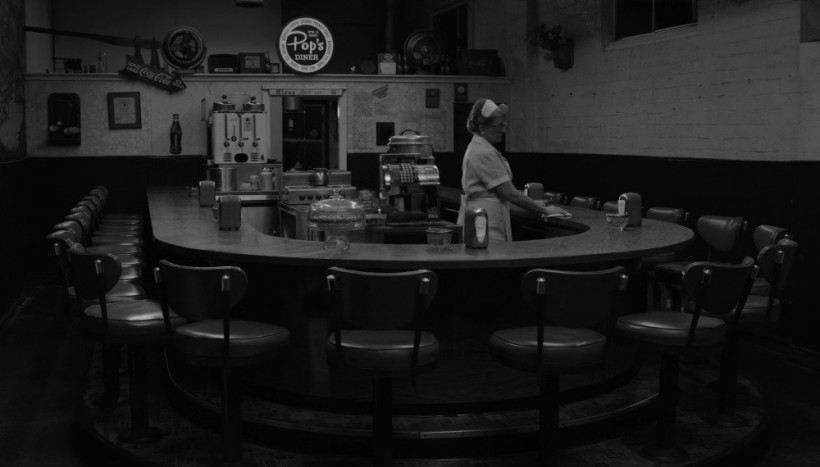
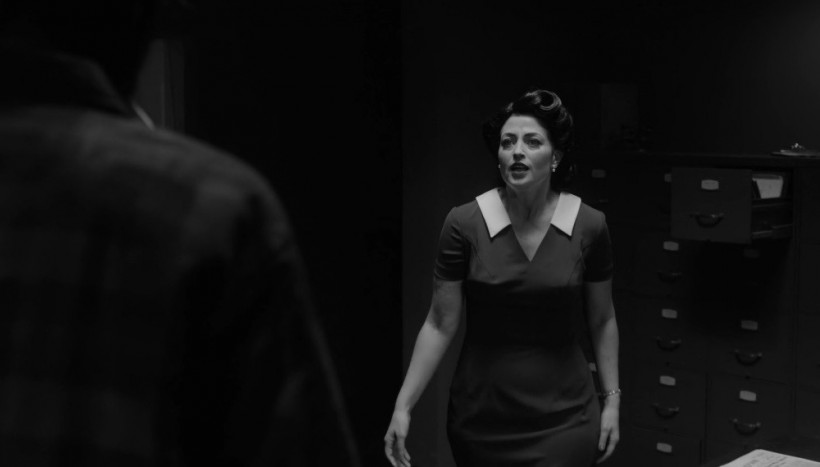
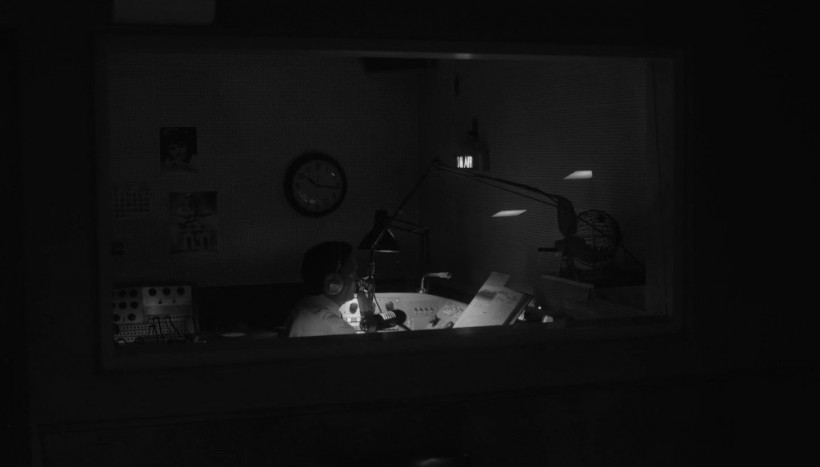
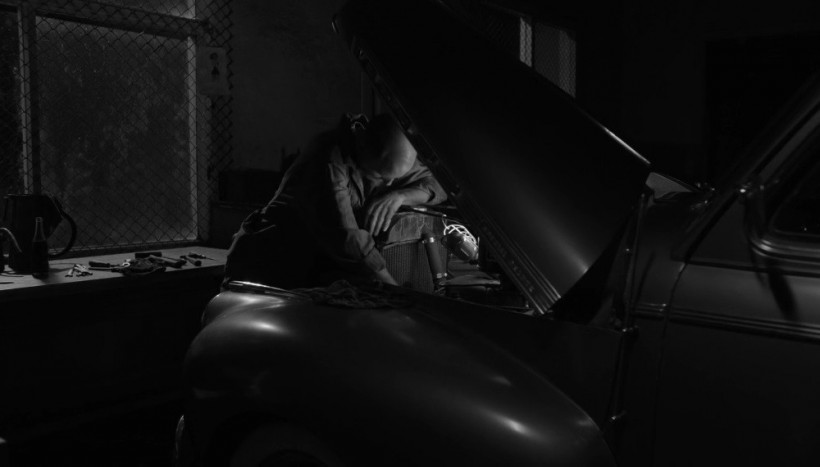
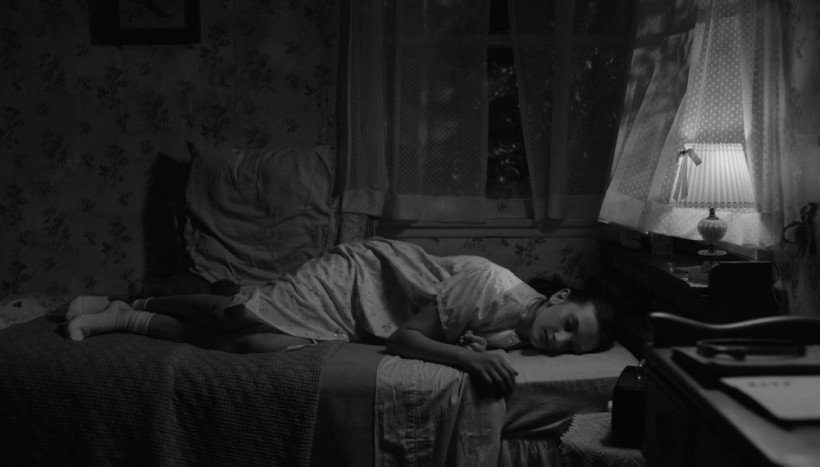
Girl on her Bed
The mise-en-scene of the attack on the teenage girl is different in every sense, which may have narrative significance, or at least Lynch/Frost want us to consider the possibility of her fate being different (for example, many Twin Peak fans and scribes have speculated that this girl is in fact Sarah Palmer, which would explain Sarah’s odd behavior later in the narrative!). In terms of the other differences, the girl is the only one of the five victims that is attacked in her home rather than work place (radio station, diner, garage), giving the attack a less anxious feel. And while the waitress and mechanic crumble to the floor as if having lost all bodily control, the girl looks at her radio from a seated position against the wall on her bed and calmly lies down and rests her head on her pillow, closer to the radio. Her face shows no signs of pain, discomfort or loss of control, in stark contrast to the other victims. The scene of the alien “impregnation,” filmed in uncomfortable close-up, with the alien bug entering the girl’s waiting mouth, is one of the most squeamish alien body take-over scenes in science-fiction history. A distant second would be the alien take-over from the Japanese SF shocker Goke-the Body Snatcher from Hell (Hajime Sato, 1968), where a silver mercury shaped vampiric alien life force enters its human hosts through a vaginal slit in the forehead.
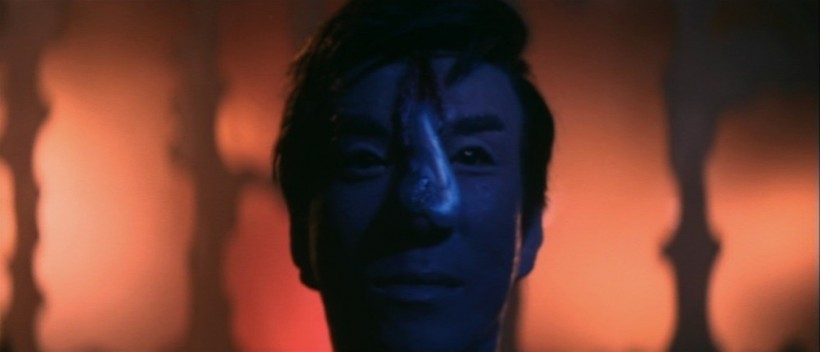
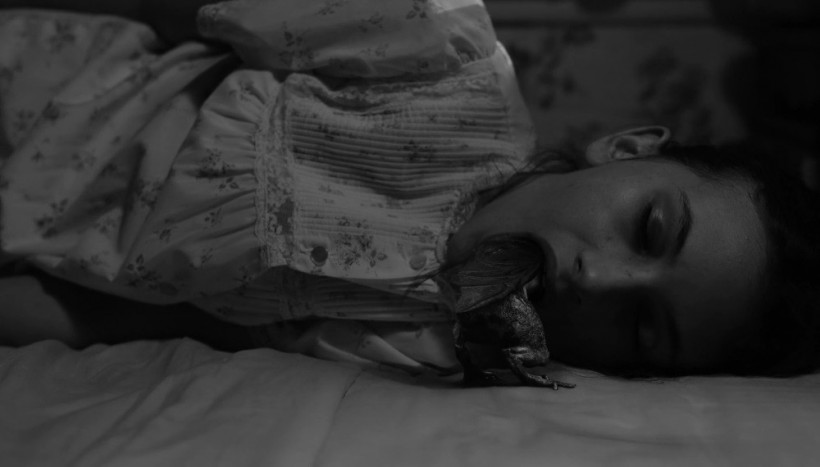
After killing the radio host the Woodsman leaves the station and walks away into the dark desert, an image which, if not for its near total darkness, recalls the classic Western finale where the gunslinger leaves town to continue wandering the West. After the Woodsman leaves our field of vision, we get a beat of silence before we hear, what I think is, the feint, distant sound of a horse neighing. If my ears are right, this is a sly, pretty hilarious confirmation of Lynch’s self-conscious allusion to the Western, blended into a science-fiction scenario.
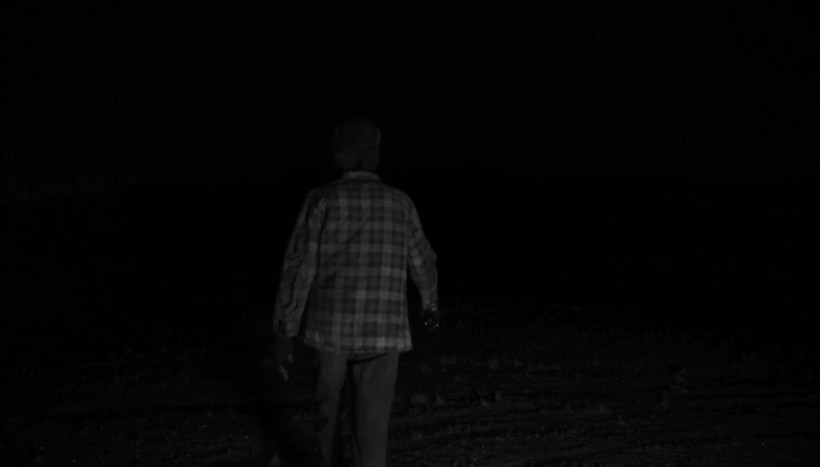
Gunslinger leaves town
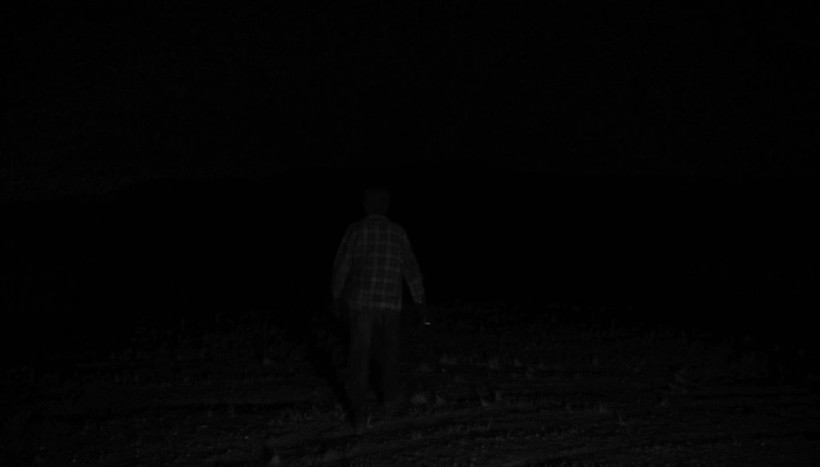
Do you hear horses?
To return to Lynch’s aesthetic representation of the bomb, although grounded in history (the title card) Lynch’s depiction of the atomic explosion owes more to the abstract painter Willem de Kooning’s views on the atomic bomb than political history. In a talk he gave entitled “What Abstract Art Means to Me,” de Kooning wrote, “Today, some people think that the light of the atom bomb will change the concept of painting once and for all. The eyes that actually saw the light melted out of sheer ecstasy. For one instant, everybody was the same color. It made angels out of everybody. A truly Christian light, painful but forgiving.” According to scholar Akira Mizuta Lippit, “the advent of atomic light signaled, for de Kooning, the absolute transformation of visual representation” (p. 81). These words can be applied to Part 8 (especially from 15 minutes to the end) and Lynch’s “absolutely transformation” of the televisual space. The almost universal viewer reaction of astonishment to Part 8 is an indication that Lynch was indeed testing the “limits” of visual representation with the bomb imagery and its “fallout”. Lippit’s views on the atomic bomb and photography may go some way in understanding why Lynch chose to stage his atomic explosion using CGI rather than any of the hundreds of existing photographs or film footage: “There can be no authentic photography of atomic war because the bombings were themselves a form of total photography that exceeded the economies of representation, testing the very visibility of the visual. Only a negative photography is possible in the atomic arena, a skiagraphy, a shadow photography, the shadow of photography. By positing the spectator within the frames of an annihilating image, an image of annihilation, but also the annihilation of images, no one survives, nothing remains: “it made angels out of everybody.”
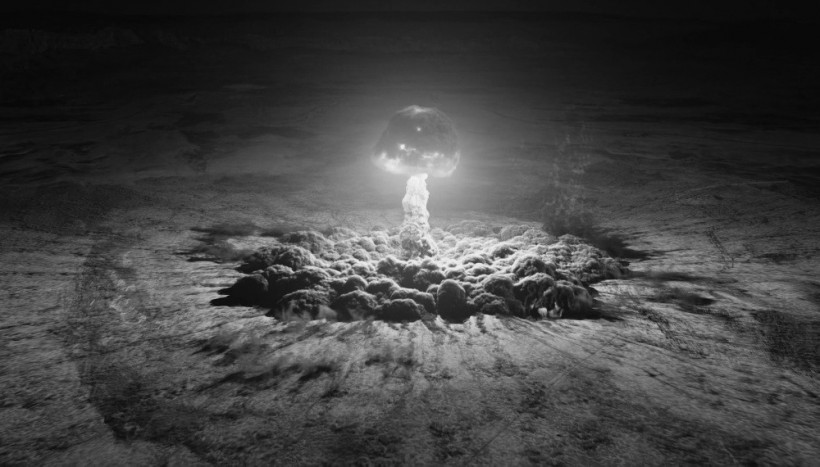
Whose “filming” Lynch’s Bomb?
This is the water, and
This is the well
Drink full and descend
The horse is the white of the eyes
And dark within
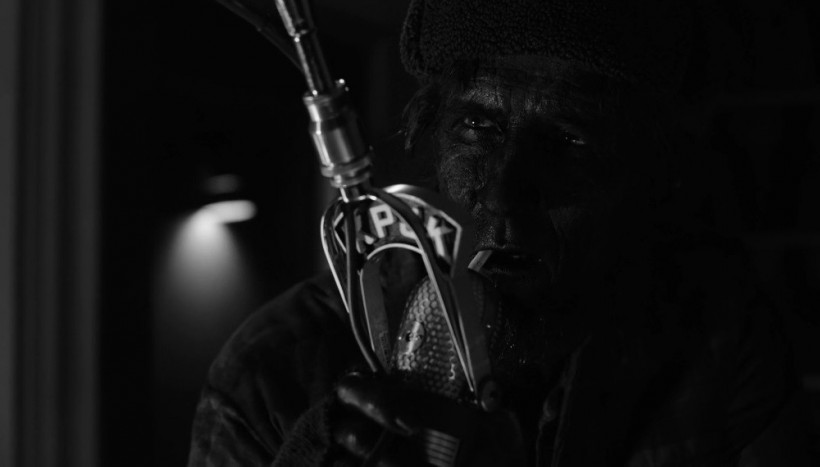
A mantra for the ages
Bibliography
Bil, Geoff. “Tensions in the World of Moon: Twin Peaks, Indigeneity and Territoriality.” Senses of Cinema, Issue 79, July 2016.
Bocko, Joel. “Secret Histories Return to Twin Peaks” Offscreen Volume 21, Issue 11-12, 2017. http://offscreen.com/view/secret-histories-return-to-twin-peaks
Interview with Richard Broski: https://www.hollywoodreporter.com/live-feed/twin-peaks-meet-man-behind-david-lynchs-new-nightmare-1018088
Carroll, Michael. “Agent Cooper’s Errand in the Wilderness: Twin Peaks and American Mythology”, Literature/Film Quarterly 21:4 (1993): 287-295
De Kooning, Willem. Talk delivered at the “What is Abstract Art?” symposium, The Museum of Modern Art, New York, February 5, 1951. http://www.dekooning.org/documentation/words/what-abstract-art-means-to-me
Hinton, Joan. “Trinity Eye Witness Accounts.” Atomic Heritage Foundation. https://www.atomicheritage.org/key-documents/trinity-test-eyewitnesses
Horse, Michael. “Michael Horse Movies & TV,” Gathering Tribes website. Accessed 15 December 2017 (last updated 13 September 2015) https://www.gatheringtribes.com/michael-horse/michael-horse-movies-tv
Lippit, Akira Mizuta. Atomic Light (Shadow Optics). Minneapolis: University of Minnesota Press, 2005. https://muse.jhu.edu/ (accessed December 14, 2017)
Lippit, Akira Mizuta. Atomic Light (Shadow Optics). Minneapolis: University of Minnesota Press, 2005.: http://www.diagonalthoughts.com/?p=1005 (accessed December 14, 2017)
Lovatt, Deborah, “A Terrible Beauty: The Nuclear Sublime in Philip Ridley’s The Reflecting Skin.” European Journal of American Culture. 2002, Vol. 21 Issue 3, p. 133-145.
Seitz, Matt Zoller. Vulture. “The Eight Episode of Twin Peaks: The Return is Horrifingly Beautiful.” http://www.vulture.com/2017/06/twin-peaks-the-return-part-8-atom-bomb-flashback.html
Swain, Sara. “Circling the Void: Twin Peaks Returns.” Offscreen Volume 21, Issue 11-12, 2017.
“[http://offscreen.com/view/circling-the-void-twin-peaks-return”:[http://offscreen.com/view/circling-the-void-twin-peaks-return]
Notes
- To clarify the corpus, in one of the first and still defining texts on the 1950s science-fiction film, Keep Watching the Skies: American Science Fiction Films of the Fifties (1982, 2010 the 21st Edition), author Bill Warren notes that the concept of the 1950s science-fiction film started in 1950 but carried over to 1962. ↩



